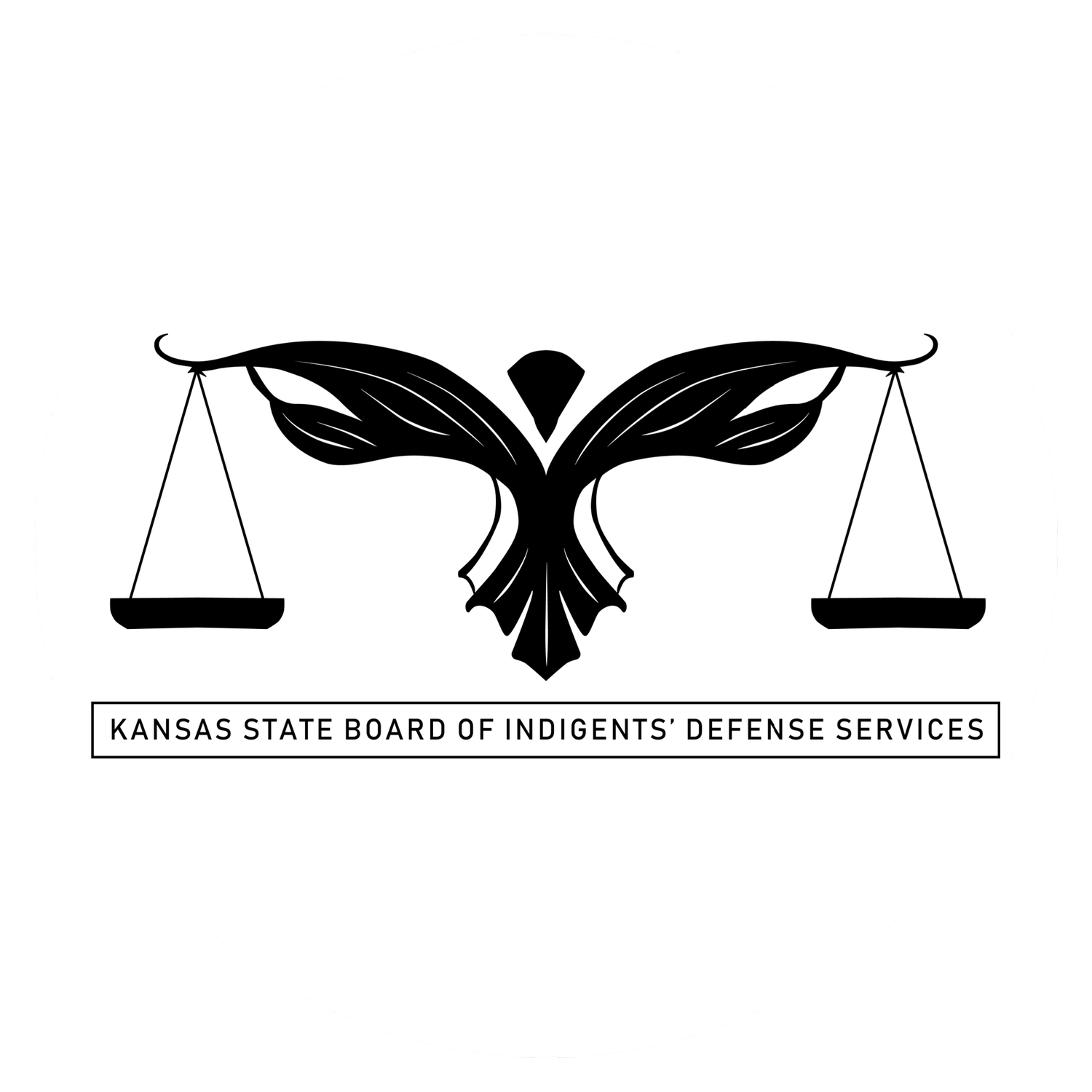BIDS Turns 40: Revisiting Where BIDS Has Been and Where We’re Going
by Meryl Carver-Allmond, BIDS Training Director
The Kansas Board of Indigents’ Defense Services (colloquially known as “BIDS) is celebrating its 40th birthday this year. In celebration, let’s take a look back at where public defense in Kansas started and where it is now.
The right to counsel in Kansas and our early structures for public defense
Kansans who are unable to afford counsel have enjoyed the right to a public defender since our statehood era, with Chapter 82, Section 160 of the General Statutes of 1868 providing that, “If any person, about to be arraigned upon an indictment or information for a felony, be without counsel to conduct his defense, and be unable to employ any, it shall be the duty of the court to assign him counsel....” But while the right was recognized early on, it was not until after the landmark Gideon v. Wainwright decision, in 1963, that anything resembling our modern public defender system existed.
In 1969, the Legislature created the Board of Supervisors of Panels to Aid Indigent Defendants. (And I thought “Board of Indigents’ Defense” was a mouthful!) That organization was essentially an assigned counsel program, appointing attorneys who were otherwise employed in private practice to represent people who could not afford counsel.
Just a few years later, in 1971, spurred by a proposal of the Public Defender Committee of the Kansas Bar Association, the legislature passed a statute that authorized district courts to establish public defender offices on a judicial district basis. The Third Judicial District Public Defender Office (Topeka), the North Central Regional Public Defender Office (Junction), and the Salina Regional Public Defender Office were all opened pursuant to that legislation.
The birth of BIDS and the growth of our public defender offices
Then, in 1982, our current system – BIDS – was enacted by statute to both oversee public defender offices and to facilitate assigned counsel in areas of the state without public defender coverage. The Sedgwick County Public Defender Office opened quickly thereafter (1985), followed by the Appellate Defender Office (1986), the Tenth Judicial District Public Defender Office (Olathe, 1989), and the Western Regional Public Defender Office (Garden City, 1994).
Following the resurrection of the death penalty, DPDU opened in 1995 and the Capital Appellate Offices quickly followed in 2002 because the volume and scope of capital appeals detracted from the other essential business of the Appellate Defender Office.
During those same years, BIDS also opened several regional and conflict offices, including the Southeast Kansas Office (Independence/Chanute, 1997), the Northeast Kansas Conflicts Office (Topeka, 1997), and a consolidated Reno County Office (2000). The most recent trial office BIDS opened was the Sedgwick County Conflicts Office (2009), but the Capital Habeas Defender is the most recent office overall. It opened in Topeka in 2016 to handle the capital cases that were starting to reach the state habeas level of litigation.
BIDS funding challenges and future plans
As current public defenders and staff will not be surprised to hear, funding has always been an issue for both public defenders and assigned counsel. But in 1987, in Stephan v. Smith, the Kansas Supreme Court held that the state had to pay appointed counsel fairly, rather than relying on their goodwill in taking cases pro bono. This not only helped increase compensation for assigned counsel, it also made public defender offices more cost-effective, which resulted in many new offices being established. (You can learn more about each individual office at the bottom of this page.) In addition to being a cost-effective way of providing public defense, our offices offer other advantages to our clients: as a collection of attorneys working together, the offices accrue institutional knowledge and allow for collective advocacy against institutional and systemic unfairness.
But, of course, public defender funding has been an issue, too. In 2019, it was reported that one in four public defenders had resigned in the prior year primarily due to issues of high caseload and low pay. In response, BIDS Executive Director, Heather Cessna, created a three-phase plan to fix public defense in Kansas, and — as a result of that advocacy — in 2021, BIDS was allocated an additional 7.7 million dollars, a 22% increase and the highest year-to-year increase in BIDS history. In 2022, that record was topped by an 8.6-million-dollar increase in public defense spending, which helped bring BIDS employees’ salaries closer to those of similarly situated prosecutors, helped raise the assigned counsel hourly rate, and will be used to address long-neglected infrastructure needs.
BIDS currently has 15 distinct offices, including 10 trial offices, 4 capital offices, and the Appellate Defender Office. While the Board has given approval for two new offices – one in Douglas County and one in Wyandotte County – the opening date for each of those offices is contingent on funding from the Kansas Legislature.
From two or three spread-out offices to a broad network, from a system that relied on the charity of the bar to one that aggressively advocates for public defenders and staff to be paid fairly – BIDS has come a long way in 40 years. Please join me in raising a metaphorical glass to both the past and future of our Kansas public defender system!

